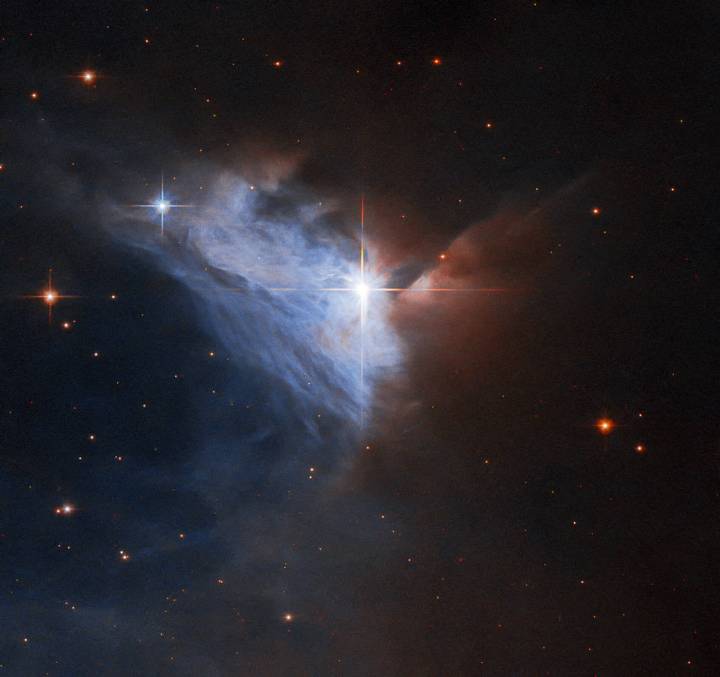
The Hubble Space Telescope has captured a stunning image of a fan of dust and gas illuminated by a star that forms a structure called an emission nebula. This nebula, known as NGC 2313 or LDN 1653, is located around 3,750 light-years away in the constellation of Monoceros. Hubble captured the image using its Advanced Camera for Surveys (ACS) instrument, which looks in both the visible light and near-infrared wavelengths.
Emission nebulae are clouds of ionized gas that glow thanks to the illumination of stars within them. The stars give off radiation, which ionizes the gas and makes it glow. In this case, the bright star V565, located right in the center of the image, is illuminating the nebula and giving it its distinctive appearance.
You can also see four diffraction spikes around the star, which are a result of a phenomena called the starburst effect. Bright sources of light like stars appears to have spikes of light coming out of them due to the way the light is captured by telescopes. The right-hand side of the image is darker as there is a denser cloud of dust there which is not illuminated.
Nebulae with this type of shape were once referred to as a “cometary nebulae,” as the shape of a star followed by a fan of gas looked somewhat comparable to a comet and its tail of dust and gas that is visible when a comet approaches the sun. However, this name is rather confusing and inaccurate as these nebulae have nothing to do with comets, so the term is no longer used.
This is one example of the way that the language used to describe space phenomena changes as we learn more, as the Hubble scientists write: “The language that astronomers use changes as we become better acquainted with the universe, and astronomical history is littered with now-obsolete phrases to describe objects in the night sky, such as ‘spiral nebulae’ for spiral galaxies or ‘inferior planets’ for Mercury and Venus.”
Editors' Recommendations
- Hubble spots a bright galaxy peering out from behind a dark nebula
- Hubble images the spooky Spider Galaxy
- Hubble spots a massive star forming amid clouds of dust and gas
- Small exoplanet could be hot and steamy according to Hubble
- Hear the otherworldly sounds of interacting galaxies with this Hubble sonification




